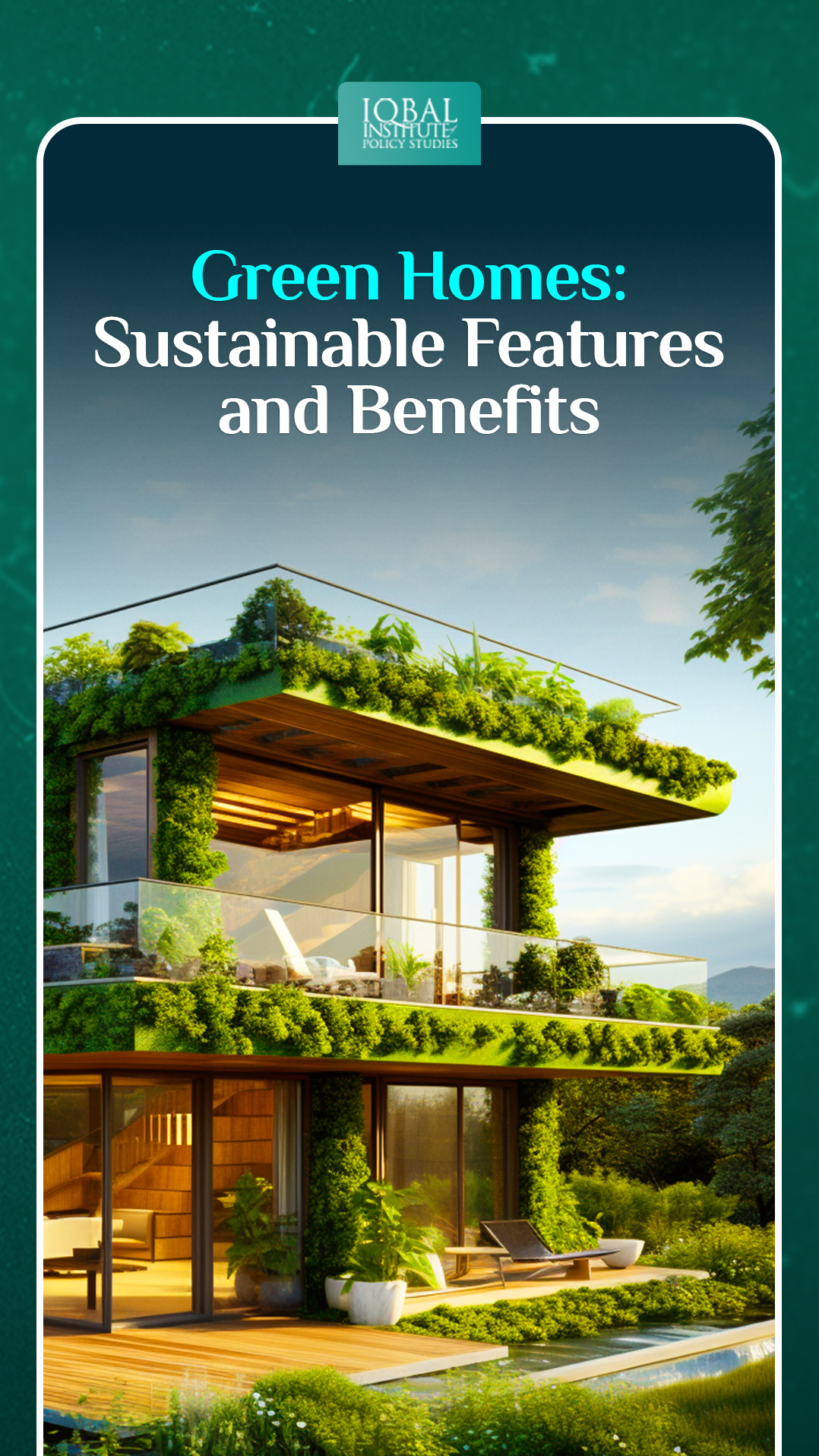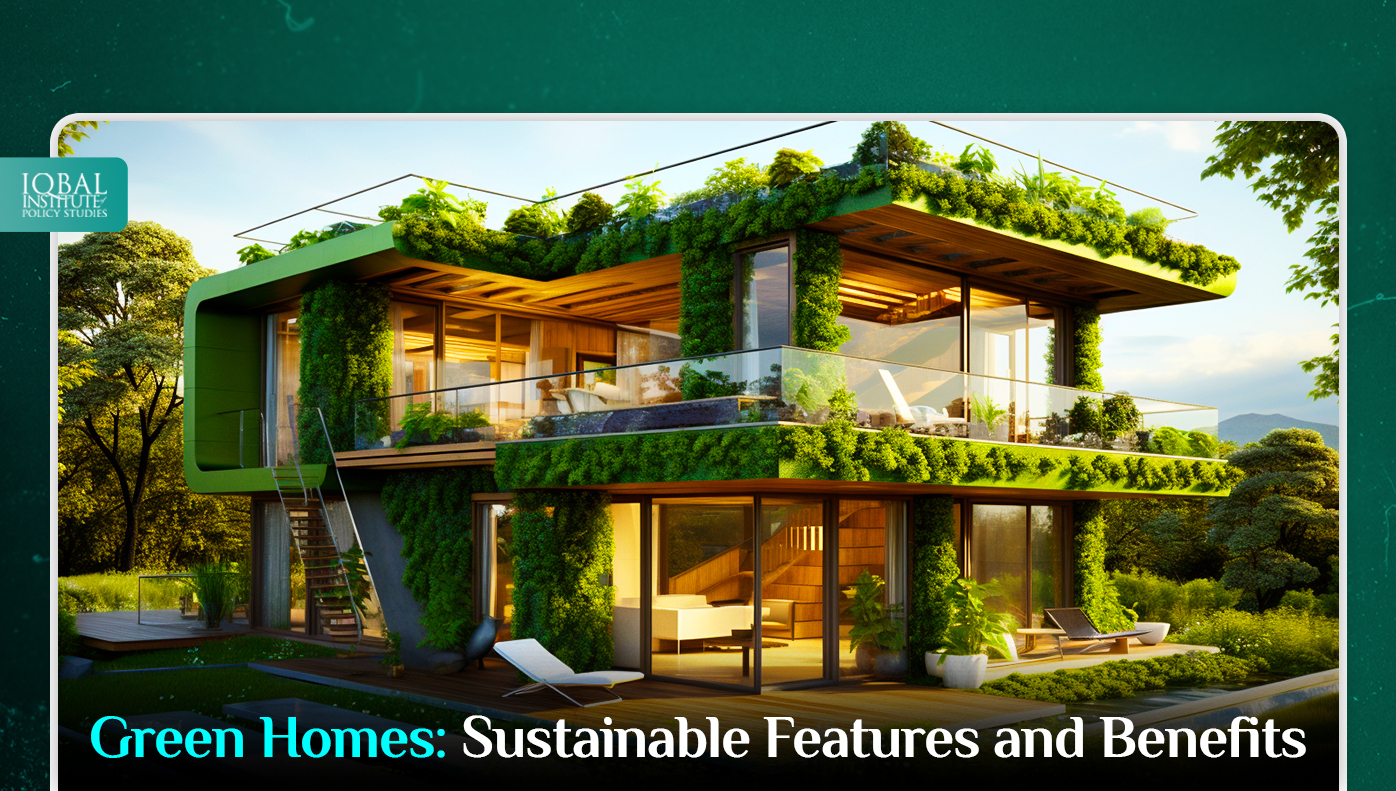Sustainability is no longer a buzzword but the key to a better future. There has been an increasing realisation of the need for sustainable living and responsibility for the environment because the world population is expanding and resources are becoming increasingly scarce. As a result, green homes have evolved as a prominent real estate concept. These homes, also known as sustainable or eco-friendly homes, are intended to have a low environmental impact while providing people with a comfortable and healthy living environment. Moreover, green homes go beyond traditional building methods and incorporate cutting-edge technologies and materials that lower energy consumption, preserve water, promote healthy indoor air quality, and cut waste output. Owning to the acute climate changes, it is critical to find solutions to lessen our ecological impact and live more sustainably. Thus, governments must make informed decisions and take actionable steps toward creating a more sustainable and environmentally conscious future by promoting the mass adoption of green homes. This will contribute to a healthier planet for ourselves and future generations.
What are the Benefits of Green Homes?
Energy Conservation
One of the most significant advantages of green homes is their emphasis on energy efficiency. These homes are planned and built with modern techniques and materials that save energy. Solar panels, energy-efficient appliances, LED lighting, and smart home technology all contribute to reducing energy use and utility expenditures. Green homes also prioritise good insulation in order to reduce energy loss and maintain ideal temperature regulation. Green homes contribute significantly to climate change mitigation by lowering dependency on fossil fuels and greenhouse gas emissions.
Effective Indoor Air Quality
Green homes prioritise their tenants’ health and well-being by providing excellent indoor air quality. Low-VOC (Volatile Organic Compounds) paints, sealants, and adhesives are used, which emit fewer hazardous substances into the air. These homes also use proper ventilation systems, such as heat recovery ventilators, which bring in fresh air while releasing stale air, resulting in a healthy indoor environment. Also, green homes help avoid respiratory disorders and boost overall well-being by limiting exposure to pollutants and allergens.
Conservation of Water
Water scarcity is a major global challenge, thus making water conservation an essential component of living sustainably is a need of time. Green homes incorporate water-saving measures and technologies to reduce water consumption. Water consumption can be reduced by using low-flow fixtures, dual-flush toilets, and efficient irrigation systems. Rainwater harvesting systems are also used in some green homes to gather rainwater for non-potable purposes such as watering plants and flushing toilets.
Minimal Environmental Impact
Green homes are constructed with a major emphasis on minimising their overall environmental impact. Sustainable building materials such as recycled content items, responsibly sourced wood, and eco-friendly insulation are utilised. The amount of building waste sent to landfills is greatly reduced by recycling and proper waste management practises. Moreover, green homes also frequently include green spaces and landscaping, which promote biodiversity and create a healthy ecology inside residential neighbourhoods.
Comfort and Well-being
Green homes prioritise occupant comfort by including amenities that improve the living environment. Proper insulation and air sealing guarantee that the indoor temperature remains stable and comfortable throughout the year. Large windows and skylights maximise the use of natural light, lowering the need for artificial lighting during the day. This not only cuts energy usage but also improves occupants’ morale and well-being. Furthermore, green homes frequently use soundproofing techniques to reduce noise pollution and provide a tranquil living environment.
What are the Disadvantages?
High Initial Investment
One of the main concerns about green homes is their higher initial cost when compared to traditional residences. Energy-efficient technologies, sustainable materials, and innovative building techniques may raise construction costs. However, the long-term financial rewards and return on investment must be considered. Green homes usually have reduced energy bills, which reduces the overall cost of homeownership over time. Furthermore, different government incentives and rebates are available to encourage the use of green building practises, making green homes more affordable for homeowners.
Options and Availability are Limited
While the demand for green homes is increasing, their availability may be limited in some areas, specifically developing nations like Pakistan. Builders and developers are increasingly adopting environmentally friendly practices, but the supply of green homes may not always meet demand. Finding green homes with specific design preferences or customization possibilities can also be difficult. However, as sustainable living takes traction, the quantity and variety of green homes are expected to grow, offering homeowners with more alternatives and choices.
Maintenance and the Learning Curve
Green homes frequently have modern technologies and systems, which may need a learning curve for homeowners. Understanding and properly operating solar panel systems or rainwater collecting systems, for example, may necessitate more study and work. However, technological breakthroughs are constantly enhancing the usability of these devices, making them more accessible to homes. Furthermore, green homes often necessitate routine maintenance to achieve peak performance and efficiency. Familiarising oneself with the maintenance requirements and taking a proactive approach can sometimes be a tedious and complex process.
Potential Variability in Performance
The performance of sustainable homes might vary based on factors such as design, building quality, and occupant behaviour. In rare circumstances, incorrect installation or poor maintenance of sustainable features might lead to poorer results. For example, if solar panels are not properly positioned or cleaned on a regular basis, their energy production may suffer. To maximise the benefits of sustainable housing, competent design, construction, and continual monitoring are required.
Aesthetics and Design Limitations
Certain architectural styles or material choices may be restricted by sustainable design principles. This can be a disadvantage for people who are looking for specific aesthetic preferences or distinctive design components. However, sustainable house design is always improving, and there are now more solutions available to fit a wide range of design preferences.
Conclusion
The significance of environmentally friendly housing cannot be overstated. Finding solutions to lessen our ecological impact and live more sustainably is critical as the world population expands and resources become increasingly scarce. Green housing provides a practical and effective solution to these issues. Continuous technological developments, increased awareness, and transforming industry practices are gradually making sustainable homes accessible and appealing. Thus, to promote the wider adoption of sustainable practices in the housing industry, it is necessary to continue investing in research, innovation, and education.
This article is written by Haneen Gul. Haneen is a research analyst at the Iqbal Institute of Policy Studies (IIPS).



Leave a Reply